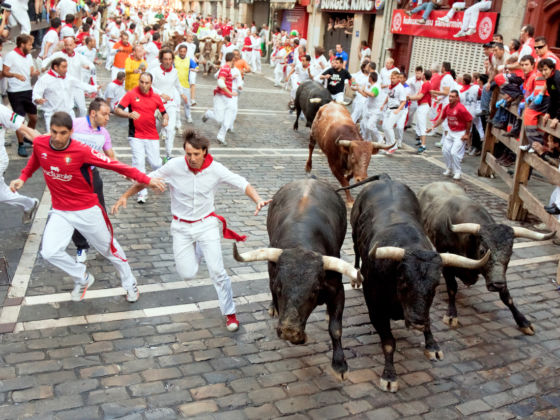1. You have to wear the uniform. You want to wear the uniform.
It’s not really a uniform, but everyone, and I mean everyone, wears white pants, white shirts, and the red scarf around their neck and the red sash around their waist. There are some variations, but denim culottes and a t-shirt from the Gap in Munich will not pass muster. Really, joining in with everyone and adopting the unwritten dress code is just part of the fun. Legend says that butchers were the first locals to run down the cobblestones. The white pants hearken back to their white aprons. Or, it might be a religious reference. No one knows anymore. The red scarf pays homage to Catholic Saint Fermín who was beheaded by the French in 303. He is said to have picked up his head and walked back into Spain. They built the Pamplona cathedral where he finally sat down and died. The religious fiesta started in 1196. The bulls wormed their way into the fiesta as the headliner within years. The sash? It’s just for style.
